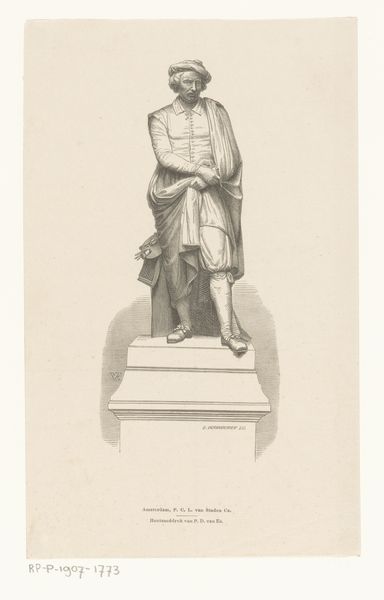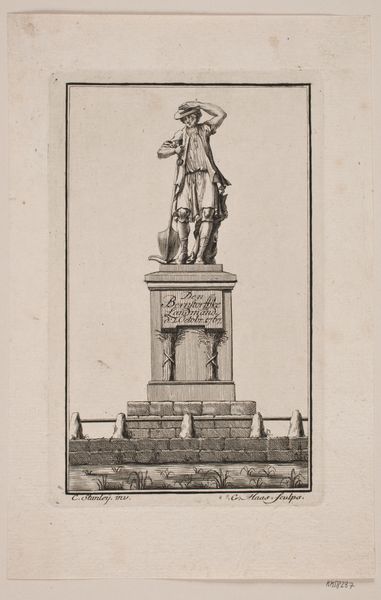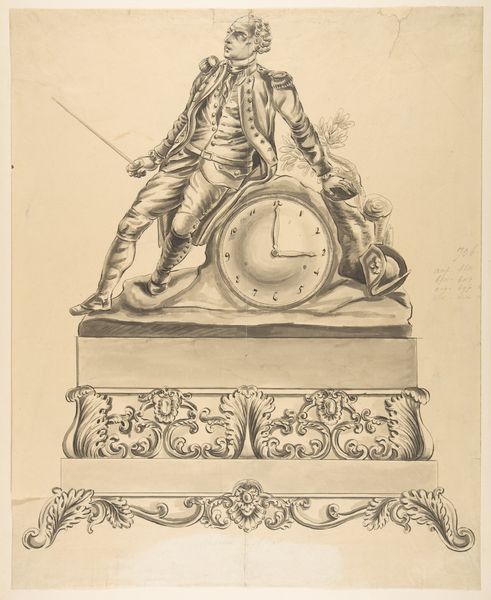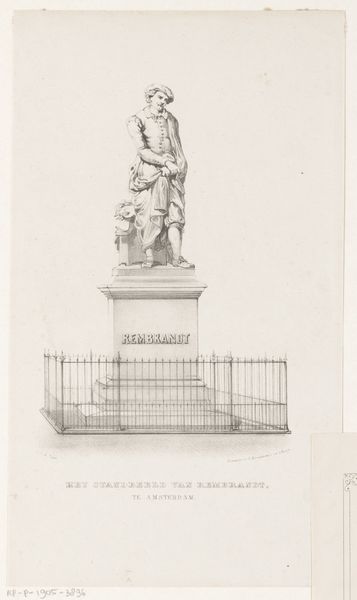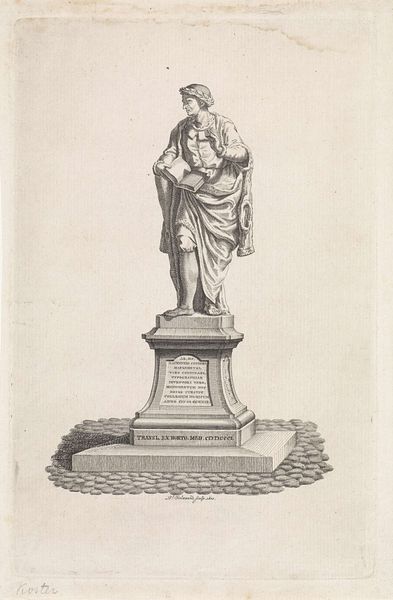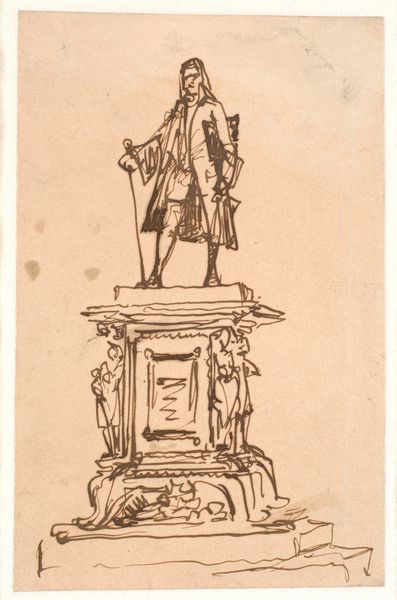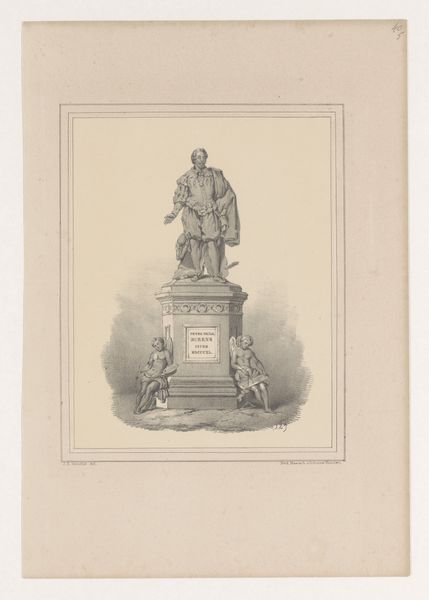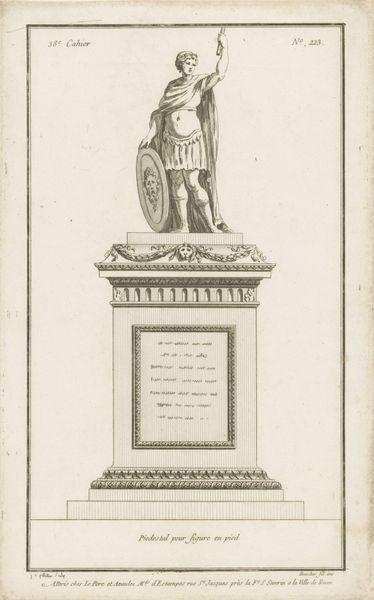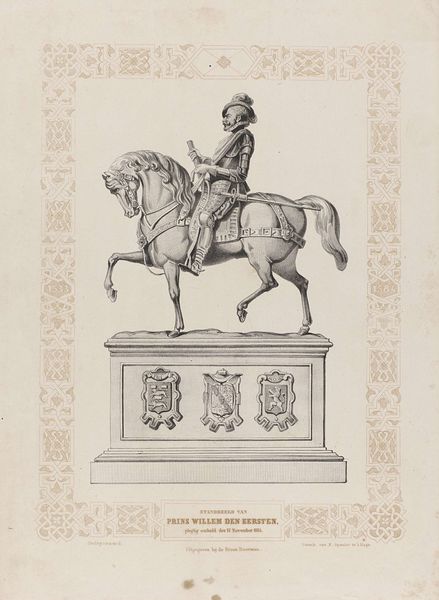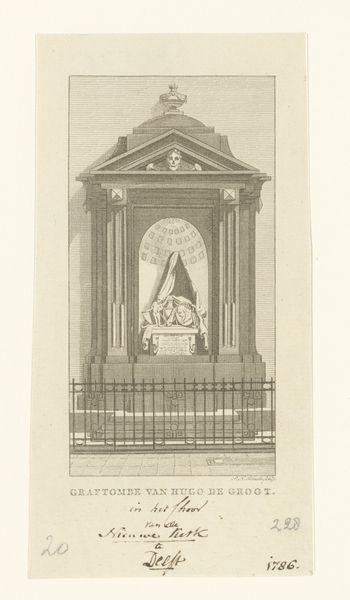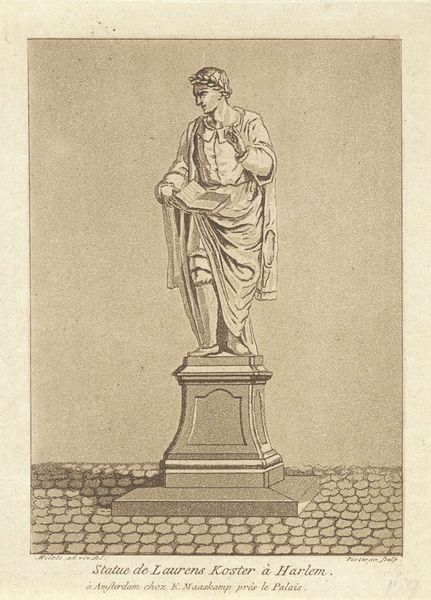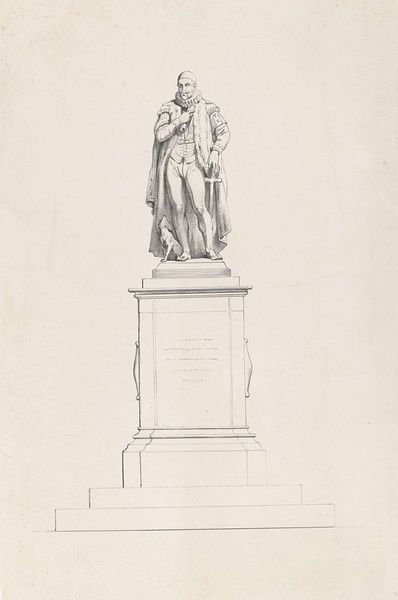
Standbeeld van Michiel de Ruyter te Vlissingen, onthuld 25 augustus 1841 1841 - 1851
0:00
0:00
drawing, sculpture, pencil
#
portrait
#
drawing
#
neoclacissism
#
sculpture
#
pencil
#
cityscape
#
history-painting
Dimensions: height 388 mm, width 280 mm
Copyright: Rijks Museum: Open Domain
Curator: Standing before us is an exquisite pencil drawing; an image of the statue of Michiel de Ruyter in Vlissingen, unveiled in 1841. This work, which is held here at the Rijksmuseum, hails from between 1841 and 1851. It is quite stately, isn't it? Editor: It’s incredibly precise, almost architectural. Very linear and neoclassical. He looks…contained, despite his achievements. Curator: De Ruyter was quite the celebrated admiral, a national hero really, and this drawing captures the monument erected in his honor. You know, there is such careful detail in the rendering of the statue itself, even down to the drapery. One feels the artist really admired their subject, both Ruyter and his likeness. Editor: And I see the cityscape in the background is deliberately minimized. There’s something to be said about controlling the narrative. It feels…sanitized. Like all we're supposed to focus on is the greatness, the legend. Is that fair to him, to history? Curator: History is always messy, isn’t it? What truly interests me here is how the drawing captures the monument’s aura; you feel that heroic posture. Pencil gives it this incredible delicacy; even with all that neoclassical strength. The subtle shading brings it to life in such an intimate way. I almost prefer this drawing of the statue to the actual sculpture! Editor: Intimacy can be deceptive, especially when it’s used to reinforce dominant narratives. Who gets remembered, how, and why. That ornate fence is also keeping something in, or out, literally delineating who belongs. This piece has more to say about the society that built the statue than maybe it intended. Curator: You make a very good point! It’s fascinating how a seemingly straightforward depiction can hold such layers of interpretation. That tension you highlighted between intended message and perceived meaning makes it a compelling historical record. Editor: Indeed, art, even seemingly straightforward commemorative pieces, remains a mirror reflecting our ongoing societal dialogue, our aspirations and, yes, our erasures. Curator: Yes! Beautifully put, and a sentiment that transforms the way one views the monument. Editor: Precisely, it allows a deeper appreciation of what we are really looking at.
Comments
No comments
Be the first to comment and join the conversation on the ultimate creative platform.
